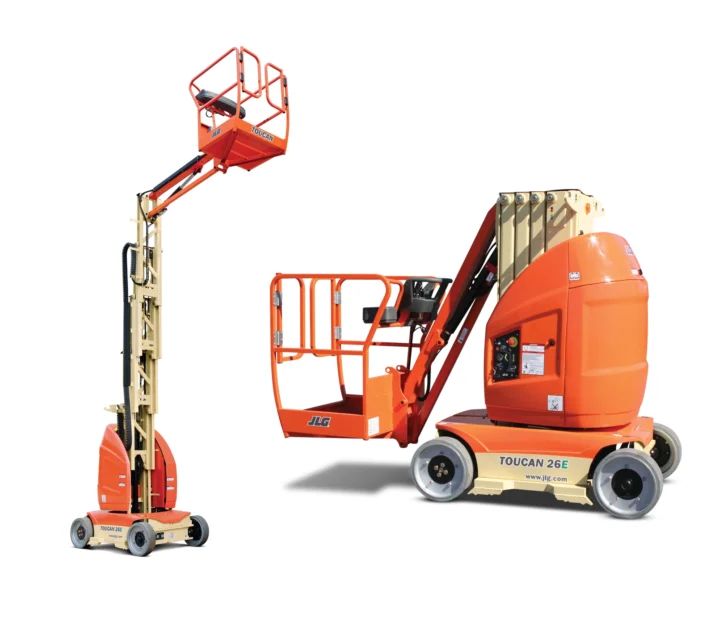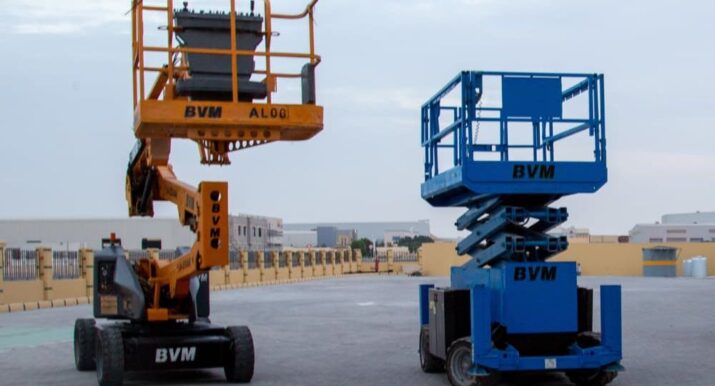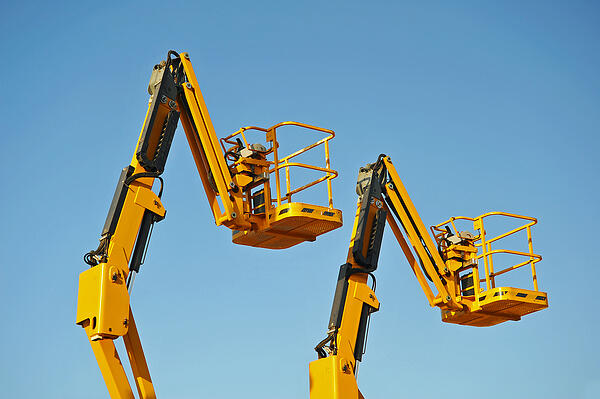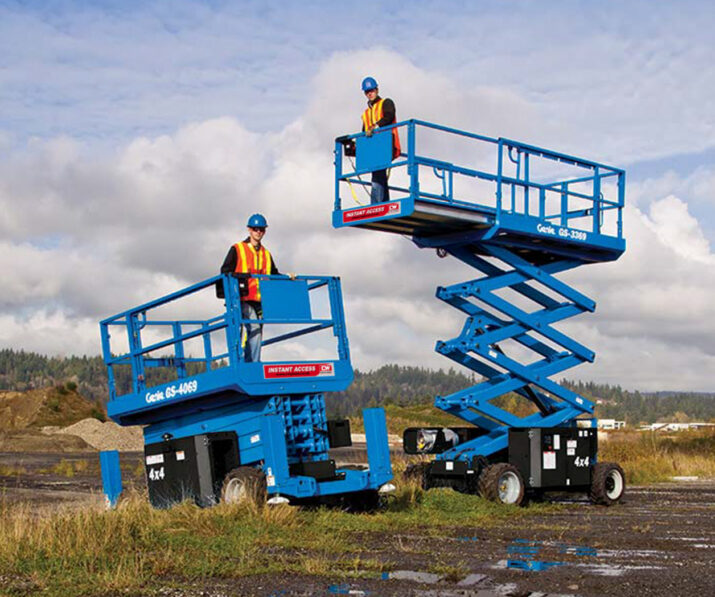In the world of construction, maintenance, and many other industries, reaching high places safely and efficiently is a constant need. Powered access tools, including cherry pickers, scissor lifts, mast lifts, and truck-mounted platforms, stand out as the heroes of vertical mobility. Each type of equipment is designed to meet specific requirements, offering a range of functionalities to ensure the job is done right.
Understanding the importance of selecting the appropriate tool for different tasks is crucial, as it not only affects the efficiency of the project but also the safety of the operators. This guide aims to shed light on these versatile tools, their applications, and how to choose among them wisely.
Cherry Pickers: Versatility and Reach

Cherry pickers, originally designed for fruit harvesting, have evolved into indispensable tools for tasks requiring height access. Their extendable arm can reach remarkable heights, offering unparalleled versatility.
Industries such as telecommunications, electricity maintenance, and tree care frequently rely on cherry pickers for their ability to navigate around obstacles. However, operating these machines comes with significant safety considerations, including proper harnessing and understanding of load limits, to prevent accidents.
Scissor Lifts: Stability and Maneuverability
Scissor lifts, named for their crisscrossing metal supports, excel in providing a stable platform for vertical elevation. This type of lift is ideal for tasks that require both stability and maneuverability, such as indoor warehousing operations and sign installations.
The compact size and mobility of scissor lifts make them suitable for a variety of environments. Safe operation requires awareness of the lift’s weight capacity and the avoidance of uneven surfaces to prevent tipping. For the best products in this domain you need to check out this company.
Mast Lifts: Compactness and Flexibility

Mast lifts offer a compact and flexible solution for elevating workers and materials, particularly in indoor settings or tight spaces where other lifts may not fit. Their vertical mast and small footprint make them perfect for retail environments, narrow warehouse aisles, and between buildings in construction sites.
Although mast lifts have limited reach compared to other powered access tools, their ease of navigation in confined spaces makes them invaluable for specific applications. Safety precautions include ensuring a level base and clear overhead space before use.
Truck-Mounted Platforms: Mobility and Reach
Truck-mounted platforms combine the mobility of a vehicle with the reach of an aerial platform, making them ideal for tasks that require moving between multiple locations outdoors. These platforms are often used in film production, large-scale construction projects, and infrastructure maintenance. The key benefits include their ability to quickly reposition and provide access to considerable heights. Operators must adhere to strict safety protocols, including securing the platform during operation and observing traffic regulations when in transit.
Comparison: Cherry Pickers vs. Scissor Lifts

When deciding between a cherry picker and a scissor lift, consider the required reach and stability. Cherry pickers offer greater flexibility in height and reach, able to extend over obstacles.
In contrast, scissor lifts provide a stable, vertical lift better suited for tasks that do not require horizontal reach. The choice often depends on the job’s specific needs, with cherry pickers preferred for complex outdoor projects and scissor lifts for indoor or stable access needs.
Comparison: Mast Lifts vs. Truck-Mounted Platforms
Comparing mast lifts to truck-mounted platforms involves considering mobility, reach, and versatility. Mast lifts excel in indoor environments and tight spaces, offering easy maneuverability but limited reach.
Truck-mounted platforms, on the other hand, provide extensive reach and the ability to move easily between job sites, making them suitable for outdoor use. The choice between these two depends on the project’s location, the space available, and the height requirements.
Safety First: Common Safety Practices for Powered Access Tools

Safety is paramount when using powered access tools. General guidelines include conducting pre-operation inspections, wearing appropriate personal protective equipment, and being aware of the surroundings to avoid collisions and tip-overs.
Each type of equipment also has specific safety measures, such as securing the platform on truck-mounted lifts or ensuring the scissor lift is on stable ground. Training and certification for operators are essential to ensure they understand these precautions and can operate the machinery safely.
Maintenance and Inspection: Ensuring Equipment Reliability
Regular maintenance and inspection are crucial for keeping powered access tools in optimal working condition and prolonging their lifespan. Key maintenance tasks include checking hydraulic systems, ensuring structural integrity, and verifying safety mechanisms.
An inspection checklist should cover potential mechanical issues, hydraulic leaks, and worn-out components. Promptly addressing these issues is vital to prevent accidents and ensure reliable equipment performance.
Renting vs. Buying: Considerations for Acquiring Powered Access Tools

The decision to rent or buy powered access tools depends on several factors, including frequency of use, budget, and storage capabilities. Renting offers flexibility and access to a variety of equipment without the need for long-term investment or maintenance responsibilities. Buying, however, may be more cost-effective for companies that use the equipment regularly. Analyzing the cost over time and considering the benefits of ownership versus rental can guide this decision.
Case Studies: Successful Applications of Powered Access Tools
Real-world applications of powered access tools highlight their effectiveness in various scenarios. From cherry pickers enabling safe and efficient maintenance of high-voltage power lines to scissor lifts facilitating inventory management in vast warehouses, these tools have proven indispensable. Industry professionals often share testimonials on how specific access platforms have streamlined operations, emphasizing the importance of choosing the right tool for the job.
Conclusion
The versatility and functionality of cherry pickers, scissor lifts, mast lifts, and truck-mounted platforms make them invaluable assets in many industries. Selecting the appropriate powered access tool for a job not only enhances efficiency but also ensures the safety of operators.
By prioritizing safety, maintenance, and the right equipment selection, businesses can achieve their objectives while minimizing risks. This guide has explored the various options available, providing insights to help readers make informed decisions about the powered access tools that best suit their needs.